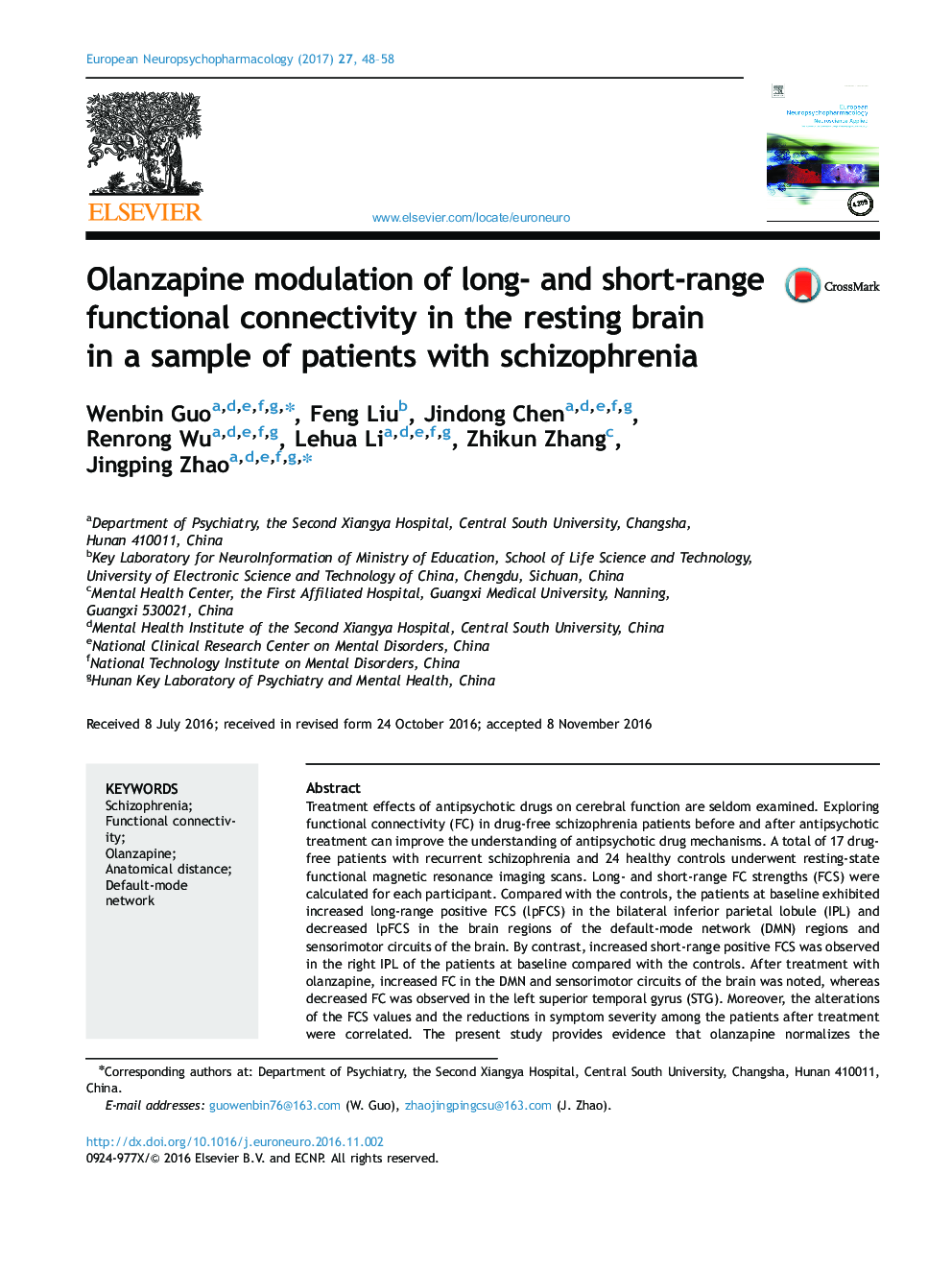| Article ID | Journal | Published Year | Pages | File Type |
|---|---|---|---|---|
| 4930527 | European Neuropsychopharmacology | 2017 | 11 Pages |
Treatment effects of antipsychotic drugs on cerebral function are seldom examined. Exploring functional connectivity (FC) in drug-free schizophrenia patients before and after antipsychotic treatment can improve the understanding of antipsychotic drug mechanisms. A total of 17 drug-free patients with recurrent schizophrenia and 24 healthy controls underwent resting-state functional magnetic resonance imaging scans. Long- and short-range FC strengths (FCS) were calculated for each participant. Compared with the controls, the patients at baseline exhibited increased long-range positive FCS (lpFCS) in the bilateral inferior parietal lobule (IPL) and decreased lpFCS in the brain regions of the default-mode network (DMN) regions and sensorimotor circuits of the brain. By contrast, increased short-range positive FCS was observed in the right IPL of the patients at baseline compared with the controls. After treatment with olanzapine, increased FC in the DMN and sensorimotor circuits of the brain was noted, whereas decreased FC was observed in the left superior temporal gyrus (STG). Moreover, the alterations of the FCS values and the reductions in symptom severity among the patients after treatment were correlated. The present study provides evidence that olanzapine normalizes the abnormalities of long- and short-range FCs in schizophrenia. FC reductions in the right IPL may be associated with early treatment response, whereas those in the left STG may be related to poor treatment outcome.
